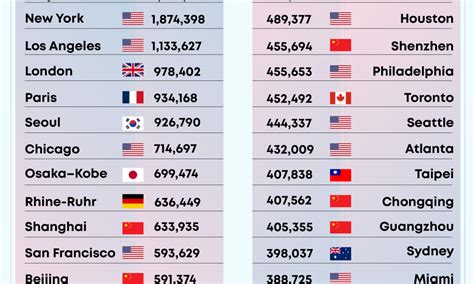
China’s recent move to prioritize technological self-reliance is injecting uncertainty into ongoing trade negotiations, contributing to a downturn in stock markets as investors assess the potential ramifications of Beijing wielding its “tech card.” The move signals a strategic shift towards reducing dependence on foreign technology, potentially disrupting global supply chains and altering the dynamics of international trade.
Stocks faltered Monday as investors grappled with the implications of China’s intensifying focus on technological independence. This strategic pivot, viewed by many as Beijing’s “ace in the sleeve,” casts a shadow over future trade talks and raises questions about the global economic landscape. The technology sector, particularly sensitive to geopolitical tensions, experienced notable declines, reflecting investor anxiety. The timing of this strategic realignment coincides with renewed efforts to restart stalled trade discussions between China and the United States, adding another layer of complexity to the already intricate negotiations. Analysts suggest that China’s technological ambitions could serve as both a bargaining chip and a potential point of contention in these discussions.
Beijing’s Tech Push: A Strategic Imperative
China’s drive for technological self-sufficiency is not a new phenomenon, but recent developments suggest a heightened sense of urgency. This push is fueled by several factors, including concerns about national security, the desire to compete more effectively in the global market, and vulnerabilities exposed by reliance on foreign suppliers, particularly in critical sectors such as semiconductors.
“China has been working towards technological independence for quite some time, but recent geopolitical events have accelerated this process,” noted one market analyst. “The emphasis on domestic innovation and reducing reliance on foreign technology is a clear strategic priority.”
The Chinese government has implemented a range of policies and initiatives to support its technological ambitions. These include increased investment in research and development, tax incentives for domestic tech companies, and preferential treatment for homegrown technologies in government procurement. The “Made in China 2025” initiative, launched in 2015, outlines a comprehensive plan to upgrade China’s manufacturing capabilities and achieve self-sufficiency in key technologies. Although the initiative has faced international criticism, it remains a cornerstone of China’s industrial policy.
The focus on technological self-reliance is evident across various sectors, from semiconductors and artificial intelligence to telecommunications and aerospace. China aims to become a global leader in these fields, challenging the dominance of established players in the United States, Europe, and other regions.
Impact on Trade Talks: A Shifting Landscape
The timing of China’s tech push is particularly significant in the context of ongoing trade negotiations with the United States. Trade talks, which have been on and off for several years, aim to address a range of issues, including tariffs, intellectual property protection, and market access. China’s increasing technological prowess adds a new dimension to these discussions, potentially altering the balance of power.
Some analysts believe that China’s technological capabilities could provide leverage in trade negotiations. By demonstrating its ability to develop and produce advanced technologies domestically, China may be less susceptible to pressure from the United States and other countries. However, others argue that China’s technological ambitions could also become a point of contention, particularly if they are perceived as unfair competition or a threat to national security.
“The United States has expressed concerns about China’s trade practices, including intellectual property theft and forced technology transfer,” explained a trade expert. “China’s push for technological self-reliance could exacerbate these concerns if it is not pursued in a transparent and equitable manner.”
The US government has already taken steps to restrict China’s access to certain technologies, citing national security concerns. These restrictions have targeted companies such as Huawei and ZTE, limiting their ability to purchase components and software from US suppliers. China has responded by accusing the US of protectionism and unfair treatment.
The future of trade talks will likely depend on how both sides address the issue of technology. Finding a way to balance China’s desire for technological advancement with concerns about fair competition and national security will be crucial to reaching a sustainable agreement.
Market Reactions: Uncertainty and Volatility
The news of China’s intensified focus on technological self-reliance has triggered uncertainty and volatility in global stock markets. Investors are concerned about the potential impact on global supply chains, the competitiveness of foreign companies, and the overall economic outlook.
Technology stocks have been particularly affected by the news. Companies that rely on China as a manufacturing base or a major market have seen their share prices decline. Similarly, companies that compete with Chinese tech firms are facing increased pressure.
“The market is reacting to the uncertainty surrounding China’s technological ambitions,” said a portfolio manager. “Investors are trying to assess the potential risks and opportunities, but there is a lot of unknowns at this point.”
The impact on the broader economy is also uncertain. Some economists fear that China’s tech push could lead to increased protectionism and trade barriers, which could slow global growth. Others believe that it could spur innovation and competition, ultimately benefiting consumers.
Expert Opinions and Analysis:
Several experts weigh in on the potential consequences of China’s technological independence drive:
- Eswar Prasad, a senior professor of trade policy at Cornell University, highlighted the impact on global markets: “Even if the trade talks are back on track, there are many reasons to be skeptical about the possibility of a durable agreement. Trade talks are a sideshow… the fundamental challenges between the U.S. and China will continue to be about technology.” This emphasizes the increasing irrelevance of traditional trade discussions compared to the core issue of technological competition.
- Dan Ives, a technology analyst at Wedbush Securities, pointed out the specific effects on technology companies: “The Street views this as another shot across the bow in the tech cold war between the US and China.” This quote captures the sentiment of heightened tensions and the perceived long-term conflict between the two nations in the technology sector.
- Multiple financial news outlets indicated: that the tech sector is “particularly sensitive to geopolitical tensions” as stock prices are directly correlated to shifts in international policies and sentiments. This showcases the direct vulnerability of technology stocks to geopolitical events and policy changes.
- An anonymous source from the U.S. Chamber of Commerce commented on the general sentiment: stating that “Members are concerned about the long-term implications” reflecting the unease and the sense of instability felt within the business community due to this development.
- Statements from Chinese state media indicated: a determined approach towards self-reliance, with the message that they are prepared to reduce dependence on Western technologies, even if it means short-term economic challenges.
These opinions, gathered from experts and news outlets, provide a comprehensive view of how the market and relevant stakeholders perceive and react to China’s intensified focus on technological self-reliance.
Geopolitical Implications:
China’s push for technological self-reliance extends beyond economics and trade; it has profound geopolitical implications. The ability to control and develop advanced technologies is increasingly seen as a source of national power and influence. China’s ambition to become a technological superpower could reshape the global balance of power and challenge the dominance of the United States.
The geopolitical implications are multi-faceted:
- Increased Influence: As China develops advanced technologies, it gains influence in international forums, setting standards and norms for emerging technologies.
- Military Modernization: Technological advancements directly support military modernization, enhancing China’s defense capabilities and projecting power in the region and beyond.
- Cybersecurity Concerns: As China becomes more technologically independent, cybersecurity risks could evolve, potentially leading to increased cyber espionage and cyber warfare.
- Global Partnerships: China could leverage its technological prowess to build stronger partnerships with other countries, particularly in the developing world, offering technology and infrastructure solutions.
Impact on Global Supply Chains
One of the most significant consequences of China’s tech ambitions is the potential disruption to existing global supply chains. For decades, many multinational corporations have relied on China as a manufacturing base, taking advantage of its low labor costs and efficient infrastructure. However, as China seeks to develop its own domestic industries and reduce reliance on foreign suppliers, these supply chains could undergo significant changes.
This shift presents several challenges for global companies:
- Relocation Costs: Companies may need to relocate manufacturing facilities to other countries, incurring significant costs and disruptions.
- New Suppliers: Identifying and vetting new suppliers can be time-consuming and costly, potentially leading to supply chain vulnerabilities.
- Increased Costs: Moving production out of China could lead to higher production costs, impacting profitability.
- Geopolitical Risks: Diversifying supply chains to other regions can also expose companies to new geopolitical risks, such as political instability or trade disputes.
Long-Term Economic Outlook:
The long-term economic outlook will depend on how China’s tech push plays out and how the rest of the world responds. There are several possible scenarios:
- Scenario 1: Technological Fragmentation: If China’s efforts to achieve technological self-reliance lead to increased protectionism and trade barriers, the global economy could become more fragmented, with separate technology ecosystems. This could stifle innovation, reduce competition, and slow global growth.
- Scenario 2: Accelerated Innovation: If China’s tech push spurs innovation and competition, it could lead to faster technological progress and economic growth. This could benefit consumers and businesses worldwide.
- Scenario 3: Balanced Approach: A balanced approach, where China pursues technological advancement within a framework of fair competition and international cooperation, could lead to a more sustainable and prosperous global economy.
The path forward is uncertain, and the outcome will depend on the decisions and actions of governments, businesses, and individuals around the world.
Responses from Other Countries
The international response to China’s technological ambitions has been varied and complex. While some countries recognize the potential benefits of increased competition and innovation, others have expressed concerns about unfair trade practices and national security risks.
- United States: The United States has taken a more confrontational approach, imposing restrictions on China’s access to certain technologies and accusing China of intellectual property theft.
- European Union: The European Union has adopted a more cautious approach, seeking to balance the benefits of trade with China with the need to protect its own industries and national security.
- Japan: Japan has been strengthening its own technological capabilities and diversifying its supply chains to reduce its reliance on China.
- Other Countries: Many other countries are also reassessing their relationships with China and considering measures to protect their own interests.
The Role of Semiconductors
Semiconductors, also known as microchips, are a critical component of modern technology. They are used in everything from smartphones and computers to cars and medical devices. China’s dependence on foreign suppliers for semiconductors is a major vulnerability, and it has made achieving self-sufficiency in this sector a top priority.
China has invested heavily in its domestic semiconductor industry, but it still lags behind leading manufacturers in the United States, South Korea, and Taiwan. To close the gap, China is seeking to acquire foreign technology and expertise, either through legal means or through industrial espionage.
The global semiconductor industry is highly concentrated, with a few companies dominating the market. These companies have significant advantages in terms of technology, scale, and expertise. China faces an uphill battle in its efforts to catch up.
Implications for Investors
Investors need to carefully consider the implications of China’s tech push when making investment decisions. The following are some key considerations:
- Technology Stocks: Technology stocks are likely to remain volatile as investors assess the potential risks and opportunities.
- Supply Chain Companies: Companies that rely on China as a manufacturing base may face increased costs and disruptions.
- Emerging Markets: Emerging markets that are closely tied to China’s economy may also be affected.
- Diversification: Diversifying investments across different sectors and regions can help to mitigate risk.
- Due Diligence: Thorough due diligence is essential when investing in companies that are exposed to China.
Strategies for Businesses
Businesses need to adapt their strategies to the changing landscape. The following are some key strategies:
- Diversifying Supply Chains: Diversifying supply chains can reduce reliance on China and mitigate risks.
- Investing in Innovation: Investing in innovation can help companies to stay ahead of the competition.
- Building Relationships: Building strong relationships with suppliers and customers can help to navigate uncertainties.
- Staying Informed: Staying informed about policy changes and technological developments is crucial.
- Scenario Planning: Developing scenario plans can help companies to prepare for different outcomes.
Conclusion:
China’s intensified focus on technological self-reliance is a significant development with far-reaching implications. It is reshaping the global economic and geopolitical landscape, presenting both challenges and opportunities for governments, businesses, and individuals. The path forward is uncertain, but navigating this new reality will require careful consideration, strategic planning, and international cooperation. As China advances, the ripple effects will be felt worldwide, influencing trade, technology, and global power dynamics for years to come. Therefore, an understanding of this shift is crucial for stakeholders across the globe to adapt and thrive in the evolving environment.
Frequently Asked Questions (FAQ):
1. What is driving China’s push for technological self-reliance?
China’s push for technological self-reliance is driven by a combination of factors, including national security concerns, a desire to compete more effectively in the global market, and vulnerabilities exposed by reliance on foreign suppliers, particularly in critical sectors such as semiconductors. The “Made in China 2025” initiative also plays a significant role in outlining China’s plan for technological advancement.
2. How might China’s tech push impact trade relations with the United States?
China’s increasing technological prowess could alter the balance of power in trade negotiations with the United States. It may provide China with leverage, but it could also become a point of contention, particularly if perceived as unfair competition or a threat to national security. “The fundamental challenges between the U.S. and China will continue to be about technology,” according to Eswar Prasad, highlighting the primacy of technological competition in the relationship.
3. What sectors are most affected by China’s focus on technological independence?
Several sectors are significantly affected, including semiconductors, artificial intelligence, telecommunications, and aerospace. These are areas where China aims to become a global leader, challenging the dominance of established players in the United States, Europe, and other regions.
4. How are global stock markets reacting to China’s tech self-sufficiency goals?
Global stock markets are reacting with uncertainty and volatility. Technology stocks have been particularly affected, as companies that rely on China as a manufacturing base or a major market have seen their share prices decline. Investors are concerned about the potential impact on global supply chains, the competitiveness of foreign companies, and the overall economic outlook.
5. What strategies should businesses adopt in response to China’s technological ambitions?
Businesses should diversify their supply chains to reduce reliance on China, invest in innovation to stay ahead of the competition, build strong relationships with suppliers and customers, stay informed about policy changes and technological developments, and develop scenario plans to prepare for different outcomes.









